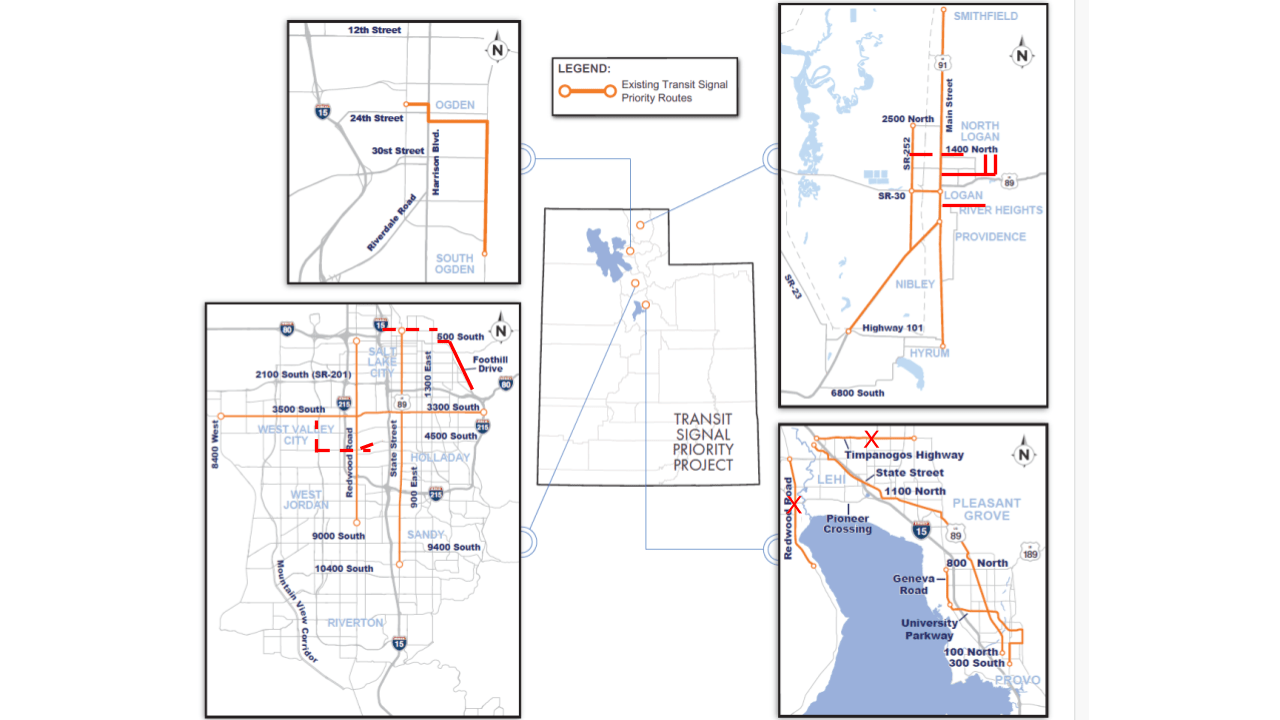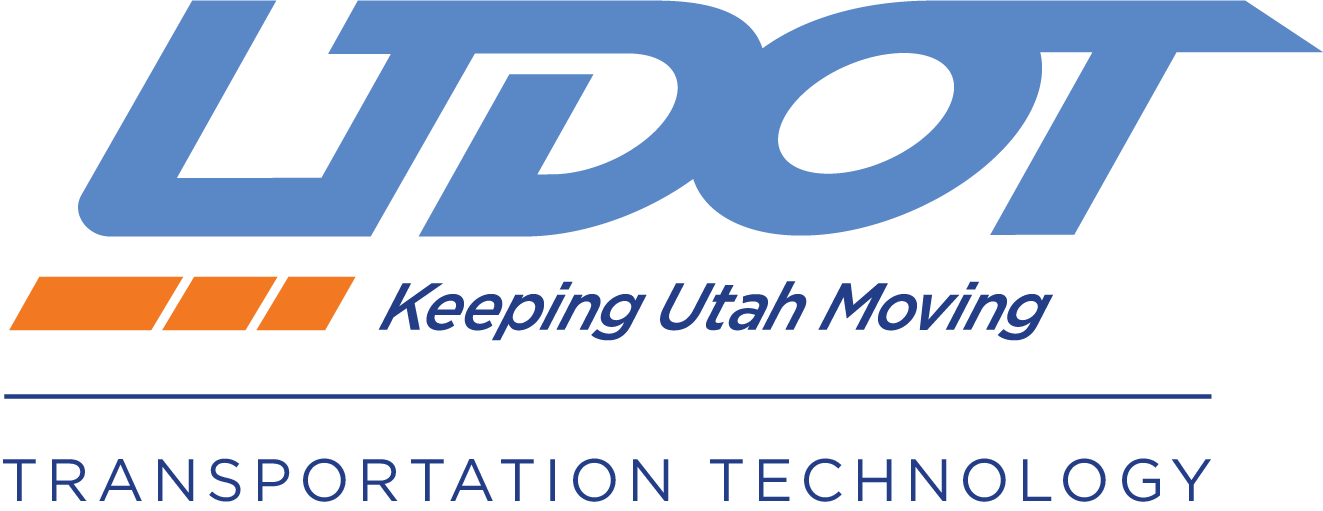Transit Signal Priority
To help improve the reliability of bus schedules, Utah Transit Authority (UTA) transit buses are connected to traffic signals through wireless ‘vehicle to everything (V2X)’ technology along selected corridors. A bus that is behind its published schedule by a certain threshold can be granted additional green light time at these connected traffic signals.
OVERVIEW
UDOT is one of the first agencies in the country to use “vehicle-to-everything” (V2X) technology to allow vehicles to share information and data with road-side infrastructure, like traffic signals. UDOT has designed a Utah Transit Signal Priority (TSP) system that utilizes this two-way V2X technology to facilitate communication between the Utah Transit Authority (UTA) buses and equipped traffic signals.
The Transit Signal Priority technology is used to keep UTA buses on schedule. When a UTA bus approaches an equipped traffic signal, it uses wireless communication channels to send and receive messages between the bus and the traffic signal. If a bus is behind schedule, this technology allows the bus to request additional green time from an equipped traffic signal. The traffic signal evaluates the request based on certain requirements. For example, a bus must be behind schedule by a given threshold of time. If the criteria are met, the traffic signal will stay green for a few extra seconds to allow the bus to get through the light and get back on schedule.
QUICK FACTS
“Using transit signal priority, transit
schedule reliability improved from 88%
to 94%.”
For this Transit Signal Priority system to work, both the bus and the traffic signal must have the wireless technology equipment and specialized software installed. UDOT also employs a web tool known as “Cirrus by Panasonic” to monitor TSP operations and track the health of the hardware systems.
An analysis of the TSP technology has revealed that the buses only request signal priority, or extra green time, about 14% to 24% of the time, depending on travel direction. Further, they are granted priority for only one-third of those requests. Extra green time is not granted when the bus can cross the intersection during the normal green time or when conditions preclude the signal from granting extra time. Studies indicate that the buses arrive at their stops more reliably when using this system. This analysis also reveals that impacts to cross-traffic are minimal.
BENEFITS OF TECHNOLOGY
There are many direct benefits of the TSP system. First, the technology allows buses to be on time more often. Second, TSP systems enhance transit reliability so that riders can depend on the bus schedule, which should encourage more ridership. Third, the technology can lead to possible fuel saving because TSP systems reduce bus delays at traffic signals, thus enhancing gas mileage.
WHERE THE TECHNOLOGY IS DEPLOYED
TSP technology is currently deployed at seven locations in Utah: Redwood Road, State Street, 3300 South, and Foothill Drive in Salt Lake County, on the Provo-Orem Utah Valley Express (UVX) bus route and State Street in Utah County and the Ogden Express (OGX) bus route in Weber County. In the future, UDOT plans to add TSP technology in Logan, Utah, with the Cache Valley Transit District. The Redwood Road corridor was the first operational use of the MMITSS technology in the United States. Other transportation agencies in the country are implementing the technology, but only on a testing and evaluation basis.

